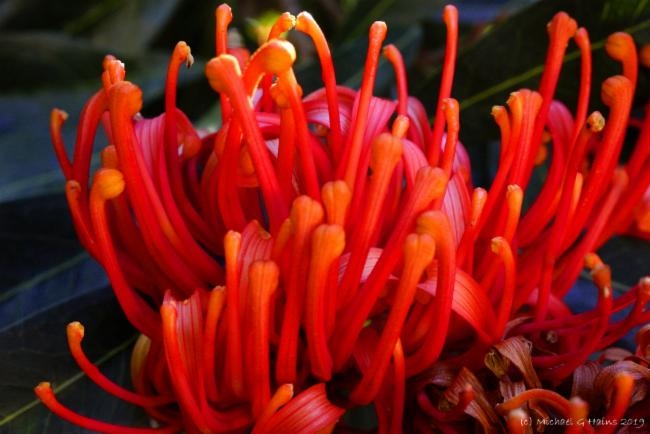Queensland Tree Waratah
(Alloxylon flammeum)
Queensland Tree Waratah (Alloxylon flammeum)
/
/

Michael Hains
CC BY 4.0
Image By:
Michael Hains
Recorded By:
Copyright:
CC BY 4.0
Copyright Notice:
Photo by: Michael Hains | License Type: CC BY 4.0 | License URL: http://creativecommons.org/licenses/by/3.0/ | Occurence ID: https://www.gbif.org/occurrence/2423549364 | Publisher: Atlas of Living Australia |















Estimated Native Range
Summary
Alloxylon flammeum, commonly known as the Queensland Tree Waratah or Red Silky Oak, is a medium-sized evergreen tree native to the rainforests of eastern Australia. It typically grows to a height of 45-90 feet (14-27 meters) and a width of 15-30 feet (4.5-9 meters). The Queensland Tree Waratah is notable for its striking red flowers that bloom in the spring and summer, which are particularly showy and attract a variety of birds. The tree’s overall appearance is enhanced by its dark green, glossy leaves and the smooth, gray bark that covers its trunk and branches.
This species is valued for its ornamental features, including its vibrant flowers and lush foliage. It is used in cultivation for urban planting, as a specimen tree, and occasionally as a border planting. The Queensland Tree Waratah thrives in full sun to part shade and requires medium amounts of water. It prefers well-drained soils rich in organic matter but low in phosphorus. Young plants benefit from some shelter. Mulching and additional watering during dry periods are recommended. Avoid fertilizers high in phosphorus; instead, opt for those formulated for Australian natives. Iron deficiency, indicated by yellowing new leaves, can be treated with iron chelate or iron sulphate. While propagation is typically by seed, semi-hardened cuttings can also be successful. Potential problems include susceptibility to root rot in poorly drained soils and phosphorus toxicity if fertilized incorrectly.CC BY-SA 4.0
This species is valued for its ornamental features, including its vibrant flowers and lush foliage. It is used in cultivation for urban planting, as a specimen tree, and occasionally as a border planting. The Queensland Tree Waratah thrives in full sun to part shade and requires medium amounts of water. It prefers well-drained soils rich in organic matter but low in phosphorus. Young plants benefit from some shelter. Mulching and additional watering during dry periods are recommended. Avoid fertilizers high in phosphorus; instead, opt for those formulated for Australian natives. Iron deficiency, indicated by yellowing new leaves, can be treated with iron chelate or iron sulphate. While propagation is typically by seed, semi-hardened cuttings can also be successful. Potential problems include susceptibility to root rot in poorly drained soils and phosphorus toxicity if fertilized incorrectly.CC BY-SA 4.0
Plant Description
- Plant Type: Tree
- Height: 45-90 feet
- Width: 15-30 feet
- Growth Rate: Moderate
- Flower Color: Red
- Flowering Season: Spring, Summer
- Leaf Retention: Evergreen
Growth Requirements
- Sun: Full Sun, Part Shade
- Water: Medium
- Drainage: Medium
Common Uses
Bee Garden, Bird Garden, Butterfly Garden, Low Maintenance, Showy Flowers
Natural Habitat
Rainforests of eastern Australia
Other Names
Common Names: Orange Tree-Waratah, Red Silky-Oak, Queensland-Waratah, Satin Silky-Oak, Satin-Oak, Pink Silky-Oak
Scientific Names: , Alloxylon flammeum,
GBIF Accepted Name: Alloxylon flammeum P.H.Weston & Crisp